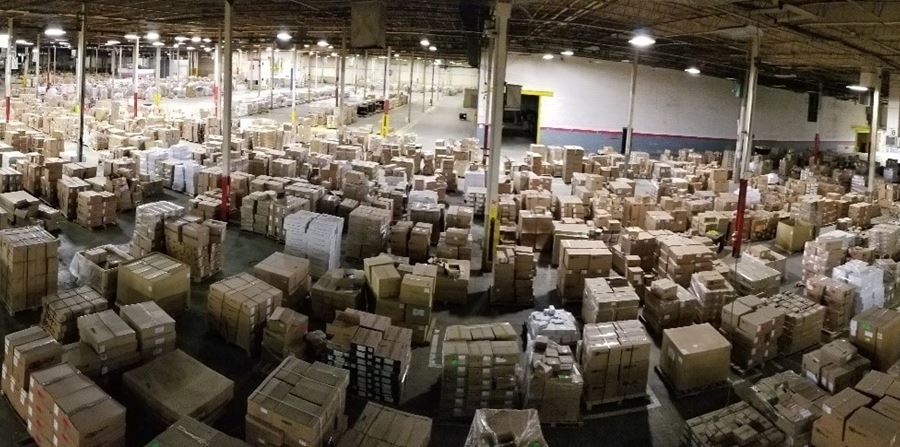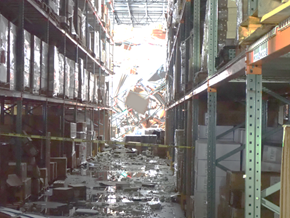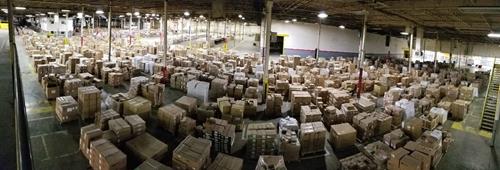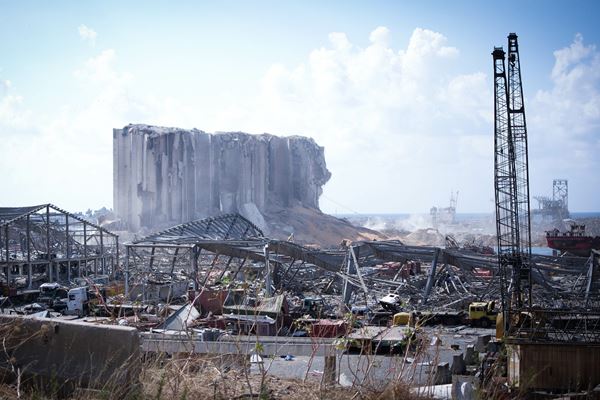Rapid Deployment of Large-Scale Inventory and Inspection Project

Incident
A major manufacturer and distributor of electronics operates a series of
In order to determine the scope of loss, all remaining pallets needed to be inventoried and every item needed to be inspected for damage resulting from the claim. With an estimated 200,000 items to be examined, of over 1,500 distinct part numbers and a target to power-on test 10% of the items, data collection and management were key to a successful inspection process. Inspection Process
To this end, Envista and AREPA developed a custom database application to store, process, and analyze the inventory and inspection results. With only two weeks between receipt of the assignment and the planned inspection start date, rapid development of this database was critical.
A rotating team of twenty Envista and AREPA personnel were deployed. The inspectors collected data through custom browser forms on their tablets, which added their results and photographs to a central database. Every week of inspection, approximately 3,000 items were examined, and 10,000 photographs were taken, generating 20 gigabytes of data per week. The full inspection process was projected to last nine months.
Product Evaluation
In order to determine the value of the loss, each item was to be classified as either good, repackage, salvage, or scrap. Inspectors first evaluated each item's packaging for watermarks or mechanical damage and then evaluated the items themselves for water contact, mechanical damage, and corrosion. A small number of pre-existing manufacturing quality issues were present, requiring inspectors to separate those problems from the damage due to the CAT event. Each inspector's findings were then checked in a multi-stage quality control process to ensure that no compromised products reached end-users. Protection of the manufacturer's reputation for delivering quality products was a primary concern throughout the project.
Since all of the inspection data was stored in a central database, live, up-to-the-minute reporting was available to the manufacturer and insurance adjusters. By the end of the process, over 30 distinct reports were developed to support various business intelligence needs. Daily throughput numbers and inspection costs were automatically calculated and reported to quantify the cost-effectiveness of the inspection process.
Warehouse Operations
Due to space constraints in other facilities, inspected materials needed to be stored in the inspection facility, and shipped out only on demand. Envista modified the database application to track the physical location of inspected items within the facility and created an interface for the third-party logistics company to use. The database became the central management tool for an operating warehouse.
In order to support ongoing supply needs for the manufacturer, Envista prioritized inspections based on the manufacturer's demand projections for different part numbers. These demand projections were subject to rapid changes. On one occasion, over a dozen pallets of material were requested, inspected, categorized, repalletized, and shipped in less than six hours.
Settlement Computations
All parties wanted the claim settled prior to the completion of the inspection process. In order to settle the claim, a value needed to be placed on 3,000 remaining pallets before inspecting their contents. To that end, Envista performed a statistical analysis of the inspection results prior to the settlement date.
Based on the data available and an inventory of the remaining uninspected materials, projected values were computed for items expected to be classified as good, repackage, salvage, or scrap. Since some relevant values were not known, Envista developed a simulator to compute claim values for different scenarios, allowing all parties to bracket the total expected value of the claim.
Final Results
By the end of the inspection project, Envista and AREPA inspected over $45 million in material. A sizeable portion of this material was determined to be in acceptable condition, dramatically reducing the cost to the insurer and allowing the manufacturer to meet ongoing business needs while avoiding double-purchasing millions of dollars of product.
Our experts are ready to help.



